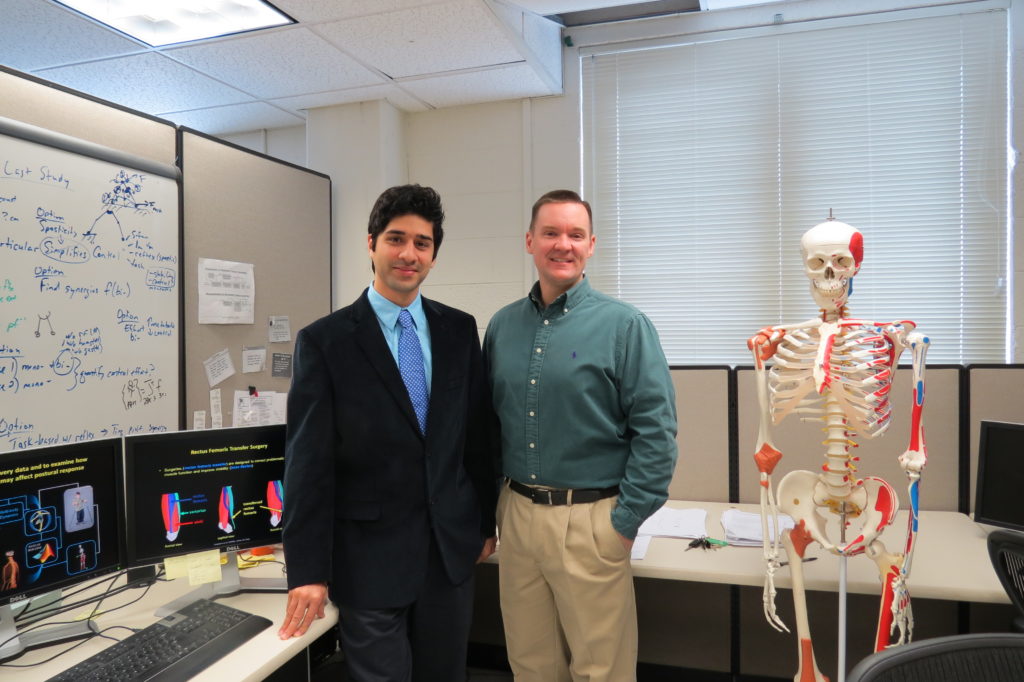
MABE PhD student Misagh Mansouri and his advisor, Assistant Professor Jeffrey Reinbolt
A child with cerebral palsy can have surgery done in which the rectus femoris muscle is disconnected from the front of the knee and reattached to the back of the leg.
The surgery can improve muscle function and the child’s mobility or it could make the child more likely to lose balance and fall during tripping. The surgery has inconsistent outcomes and currently there is no way to know which children with cerebral palsy will benefit from the surgery.
Misagh Mansouri, a PhD student in MABE, and his advisor, Jeffrey Reinbolt, an assistant professor in MABE are currently researching the procedure and its effects. In a couple of years, thanks to this research, doctors may be able to predict which children will benefit from the surgery and which will be better off without it.
Mansouri combined two software programs to create a computer model that shows how the brain controls the way these children’s bodies move when they walk. He used data collected by Gillette Children’s Specialty Healthcare, a non-profit hospital in Minnesota that is an internationally recognized leader in diagnosis and treatment of children who have disabilities and complex medical conditions. The data showed how specific children would move before and after the surgery.
“A lot of study has been given to how the surgery affects the range of motion, but we wanted to know if and how that translates into actual dynamics of balance in children with cerebral palsy,” Mansouri said. “Using the real-world data from our collaborations at the Gillette Children’s Hospital, we created patient specific models of children with cerebral palsy for both pre- and post-surgery and with different crouch postures.”
“Simulations can complement experiments to become a great asset to health care professionals,” Reinbolt said. “We are working on using patient-specific simulations to improve not only treatment of movement disorders, but interactions between people and the environment as well.”
Mansouri and his team, which included researchers from UT, Stanford, and the University of Australia, found with the simulation that “children who had the surgery were more likely to lose balance and fall during tripping than ones who did not, regardless of degree of crouched posture and whether they had the surgery on one side or both sides of their knees,” Mansouri said. “There are certainly more studies to be done and factors to be tested, but these results indicate that rectus femoris plays an intrinsic role in postural response to any challenges relating to balance.”
Mansouri’s research can hopefully translate into doctors someday being able to enter measurements into a computer to see if a child is a good candidate for the surgery.
Mansouri graduates in May but hopes to continue working on the project, adding details to see if gender and age of the children affect the outcome, and how other types of motion are affected.
The research was funded by the National Institutes of Health and the National Science Foundation.
—
C O N T A C T :
Kathy Williams (865-974-8615, williamk@utk.edu)